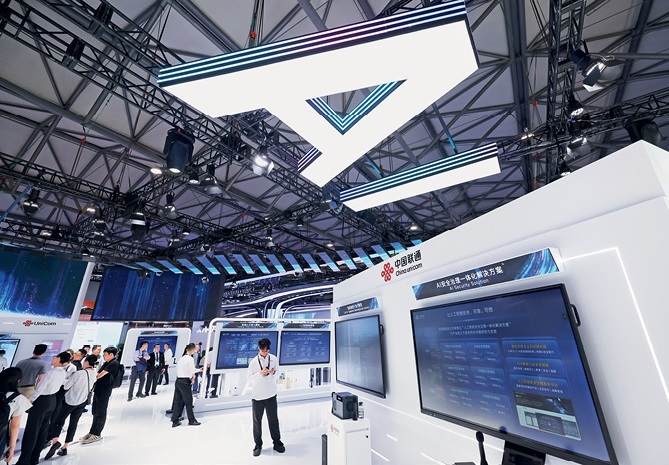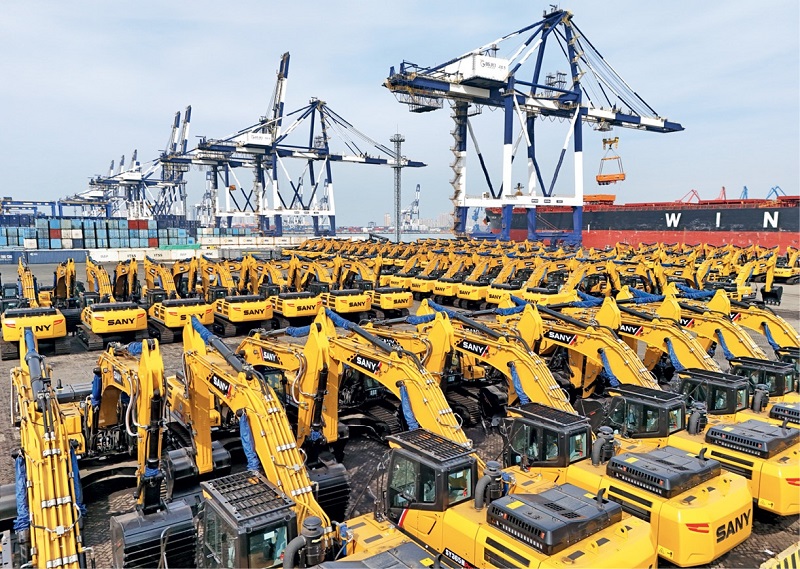President Xi Jinping has urged using five-year plans as a tool to advance development.

The 2025 Mobile World Congress Shanghai opens on June 18, 2025, in Shanghai. Themed “Converge, Connect, Create,” the event highlights four key sub-themes – 5G Inside, AI+, Connected Industries, and Connected Enablers – and features special exhibitions such as the Future Tech Hall and the GSMA Innovation Frontier Zone.
Chinese President Xi Jinping has emphasized the vital role of five-year plans as a powerful tool for national development. In a recent instruction on work concerning the compilation of the 15th Five-Year Plan (2026-2030), he stressed that the formulation and implementation of the 15th Five-Year Plan hold immense significance for fully implementing the strategic initiatives outlined at the 20th National Congress of the Communist Party of China (CPC), as well as advancing Chinese modernization.
Since 1953, China has relied on a series of five-year plans to steer its development. As the country is concluding the 14th Five-Year Plan (2021-2025), the upcoming plan takes on heightened significance since it will offer a roadmap for development amid an increasingly complex international landscape.

China-made construction machinery bound for Africa is loaded onto the China-Africa liner in Yantai Port, east China’s Shandong Province on March 7, 2025.
Greater National Strength in the 14th Five-Year Plan
In an article on guiding economic and social development with medium and long-term planning published in June 2025, Xi emphasized that the scientific formulation and consistent implementation of five-year plans constitute important experiences in the CPC’s approach to governance.
Public participation has become a core feature of the planning process. Before the compilation of the 14th Five-Year Plan, China, for the first time, solicited opinions and suggestions from the whole of society through the Internet, receiving over a million responses. In his instruction in September 2020, Xi said that the move was highly effective as it saw strong public participation, with many constructive opinions and suggestions, and urged relevant departments to promptly sort through, analyze, and carefully listen to them.
Under the guidance of the 14th Five-Year Plan, China has made remarkable achievements in multiple areas. This is reflected in robust economic growth. From 2021 to 2024, China’s average annual growth rate reached 5.5 percent, faster than many major economies in the world, demonstrating strong resilience amid the profound challenges of the COVID-19 pandemic, volatile global economic situations, and trade war threats.
Zheng Shanjie, head of the National Development and Reform Commission, said in a press conference on China’s high-quality fulfillment of targets set for the 14th Five-Year Plan period on July 9, 2025, that China’s economic growth is projected to exceed RMB 35 trillion in the five-year period, contributing about 30 percent annually to global economic growth.
“This is equivalent to the total GDP of Guangdong, Jiangsu, and Shandong, the top three provincial economies in 2024, larger than the total output of the Yangtze River Delta region, and the world’s third-largest economy,” Zheng said.
Another aspect is the advancement of science and technology. In his 2025 New Year message, Xi highlighted that China has fostered new quality productive forces in light of actual conditions and that new business sectors, forms, and models have kept emerging. “Breakthroughs have been made in integrated circuits, artificial intelligence, quantum communications, and many other fields,” Xi summarized.
Among the standout milestones: China’s Shidaowan high-temperature gas-cooled reactor — the world’s first fourth-generation nuclear power plant — has officially entered into commercial operation; the Chang’e-6 probe made history by returning with the first-ever samples from the moon’s far side; and the domestically developed C919 single-aisle aircraft began commercial service.
People’s livelihoods have also seen marked improvement. According to statistics, China has added over 12 million urban jobs each year, achieving relatively full employment in a major developing country with a population of over 1.4 billion. It has established the world’s largest education, healthcare, and social security systems, with the retention rate of nine-year compulsory education and the coverage rates of basic pension and basic medical insurance remaining above 95 percent. Notably, the average life expectancy of the Chinese people has risen to 79 years.
These achievements underscore China’s growing national strength. At a high-level reception to ring in the Chinese New Year in January 2025, Xi reaffirmed China’s commitment to deepening reforms across the board, expanding high-standard opening-up, guarding against and defusing risks in key areas and external shocks, and promoting sustained economic recovery in the plan’s final year.

Chinese aircraft manufacturer COMAC showcases models C909, C919, and C929 during the 55th edition of the International Paris Air Show at the Paris–Le Bourget Airport, in Le Bourget, near Paris on June 16, 2025.
What to Expect from the 15th Five-Year Plan
With the 14th Five-Year Plan in its final year, the groundwork for the 15th is already underway. Pledging to begin formulating the 15th Five-Year Plan this year, the 2025 Report on the Work of the Government pointed out that we should make an in-depth analysis of new features defining the 15th Five-Year Plan period, set development targets through well-conceived steps, and carry out proper planning for major strategic tasks, policies, measures, and projects, so that the plan will serve as an effective guide for China’s economic and social development.
At a symposium on China’s economic and social development in the 15th Five-Year Plan period on April 30, 2025, Xi stressed that this year marks the final year of the 14th Five-Year Plan. While accelerating the implementation of its goals and tasks, it is also essential to adapt to changing situations, grasp strategic priorities, and make sound plans for economic and social development during the 15th Five-Year Plan period.
As the CPC Central Committee organizes the drafting of proposals for this plan, Xi highlighted several directions at the symposium. At the domestic level, Xi stressed that during the 15th Five-Year Plan period, we must place greater strategic emphasis on developing new quality productive forces based on local conditions.
“Guided by scientific and technological innovation and grounded in the real economy, we should advance the transformation and upgrading of traditional industries, actively develop emerging industries, and make forward-thinking arrangements for industries of the future, so as to accelerate the building of a modern industrial system,” Xi said.
This is consistent with Xi’s instructions given in the latter part of the 14th Five-Year Plan period. For example, during his inspection trip to north China’s Shanxi Province, Xi urged local officials to push forward the transformation and upgrading of traditional industries and develop emerging and future industries in light of local conditions to foster new quality productive forces on July 8, 2025.
Regarding the international outlook, Xi emphasized that in planning the economic and social development for the 15th Five-Year Plan period, it is essential to take a forward-looking approach to understanding how changes in the international landscape will impact China and to adjust and optimize the country’s economic structure accordingly.
One prominent concern has been the rise in trade barriers. In recent years, the U.S. has increasingly relied on tariffs to impose its will on other countries. In his phone call with U.S. President Donald Trump on June 5, 2025, Xi pointed out that recalibrating the direction of the giant ship of China-U.S. relations requires us to take the helm and set the right course. “It is particularly important to steer clear of the various disturbances and disruptions,” he said.
As China transitions from the 14th to the 15th Five-Year Plan, the country faces both new challenges and fresh opportunities. Under the CPC’s leadership and through continued strategic planning, the country is poised to chart a steady course toward modernization and high-quality development.